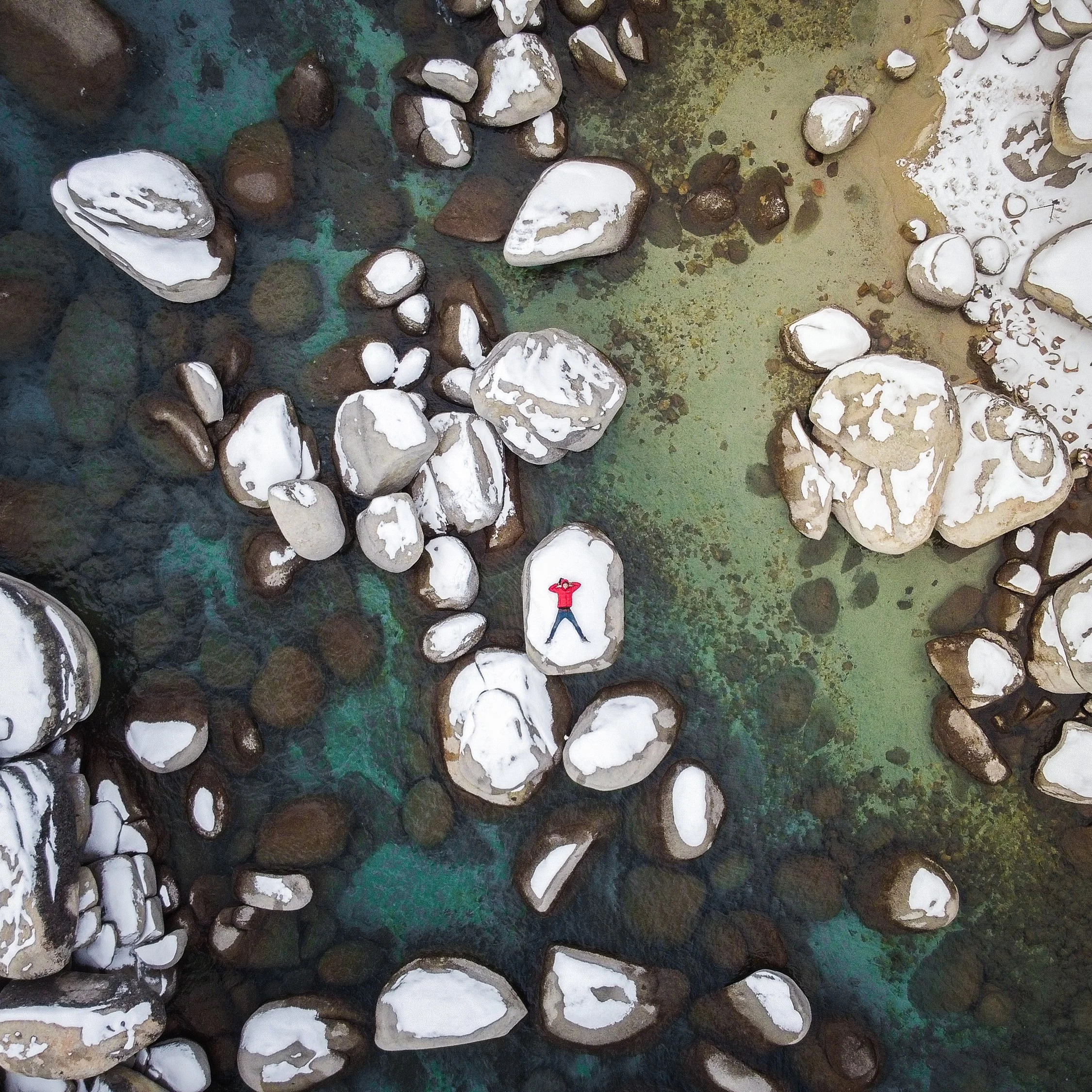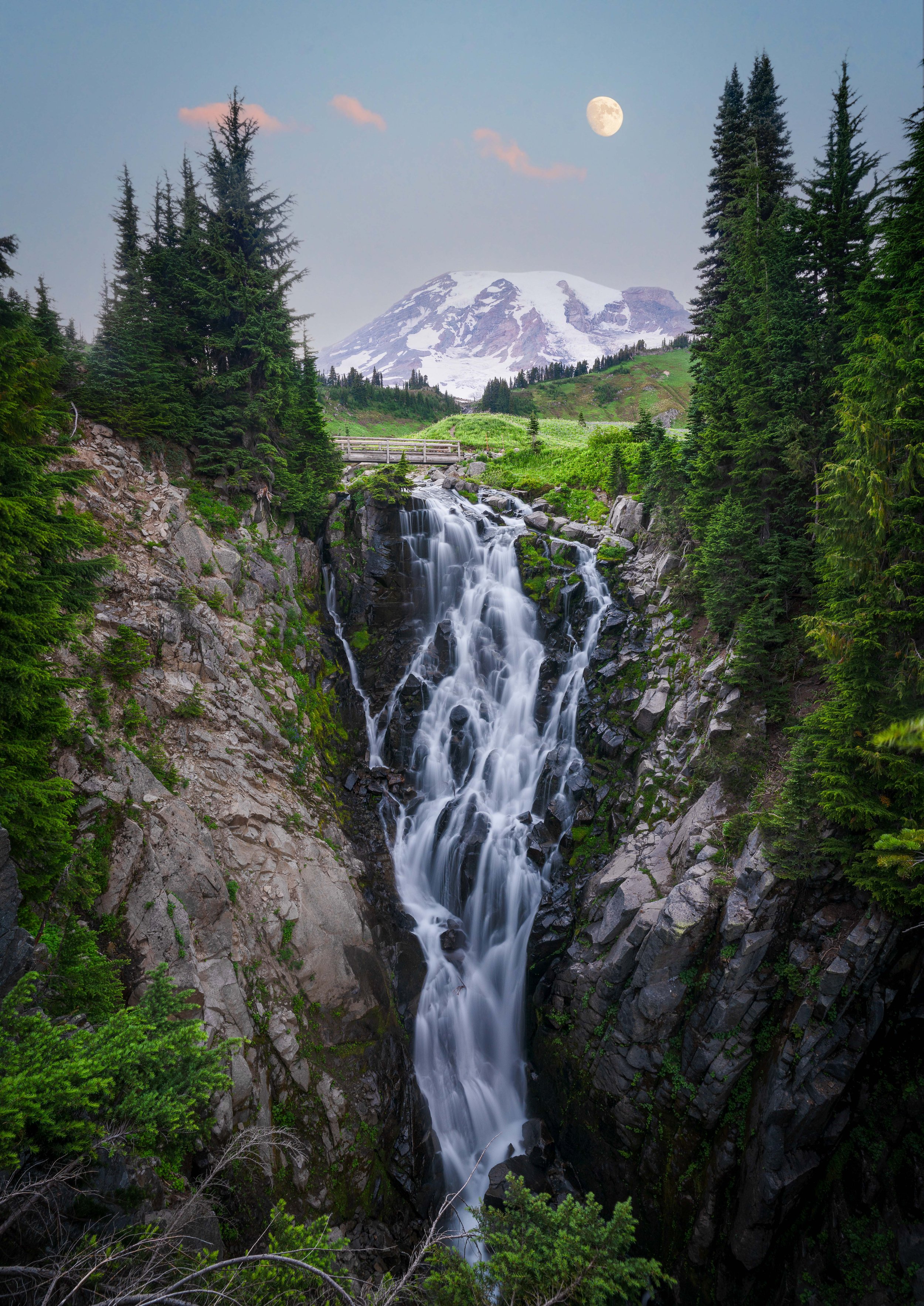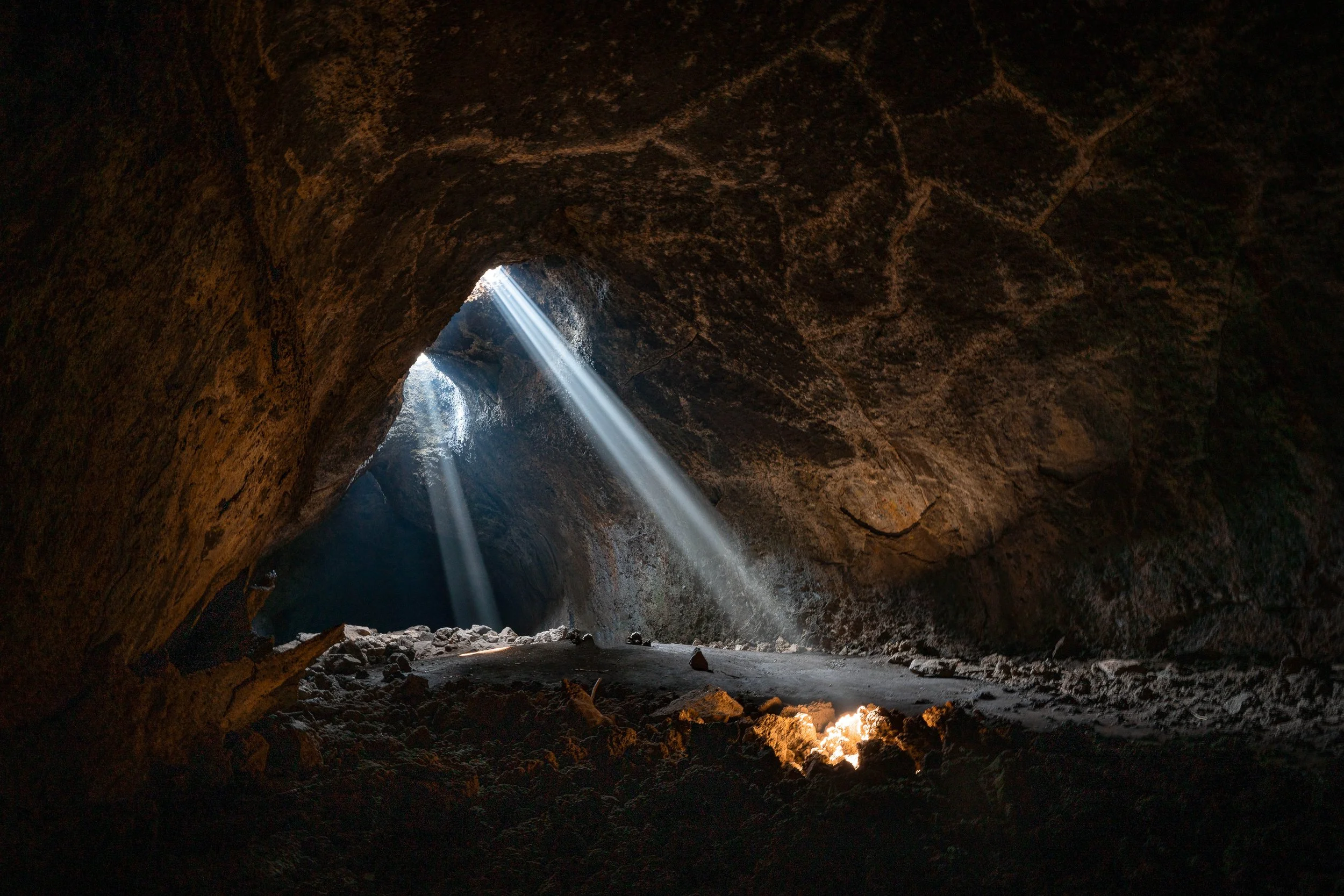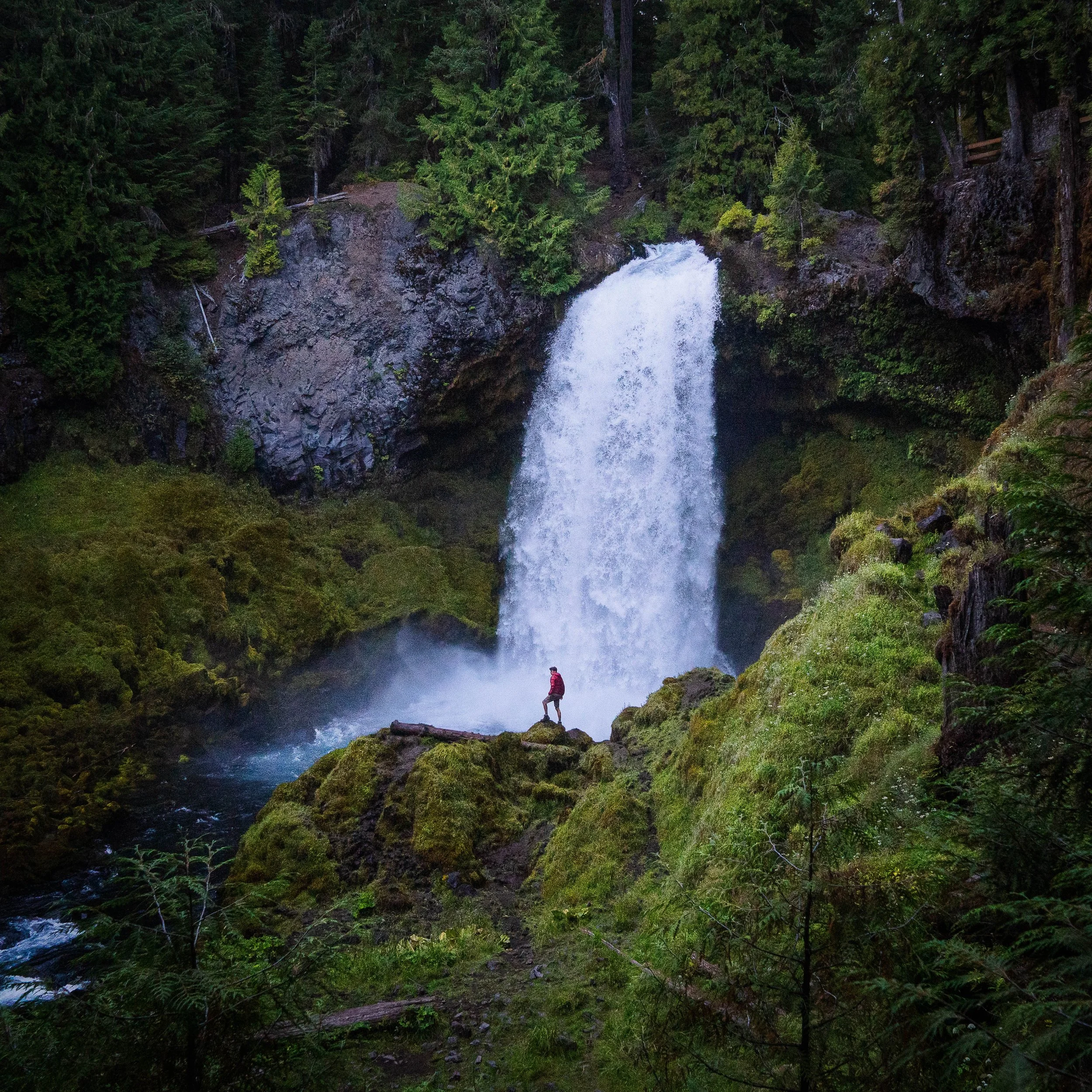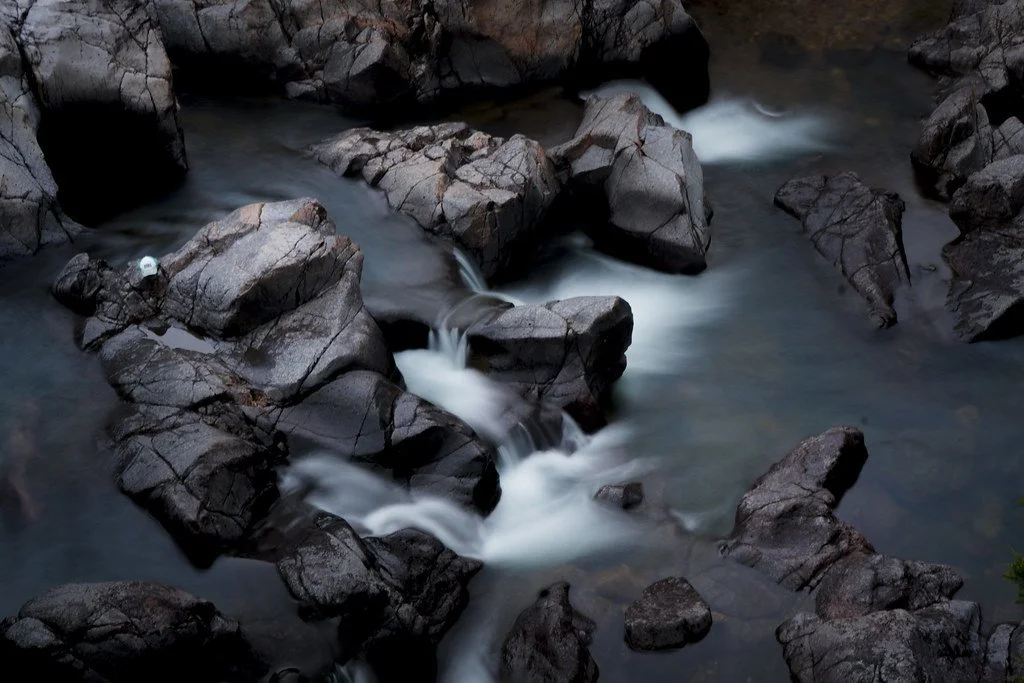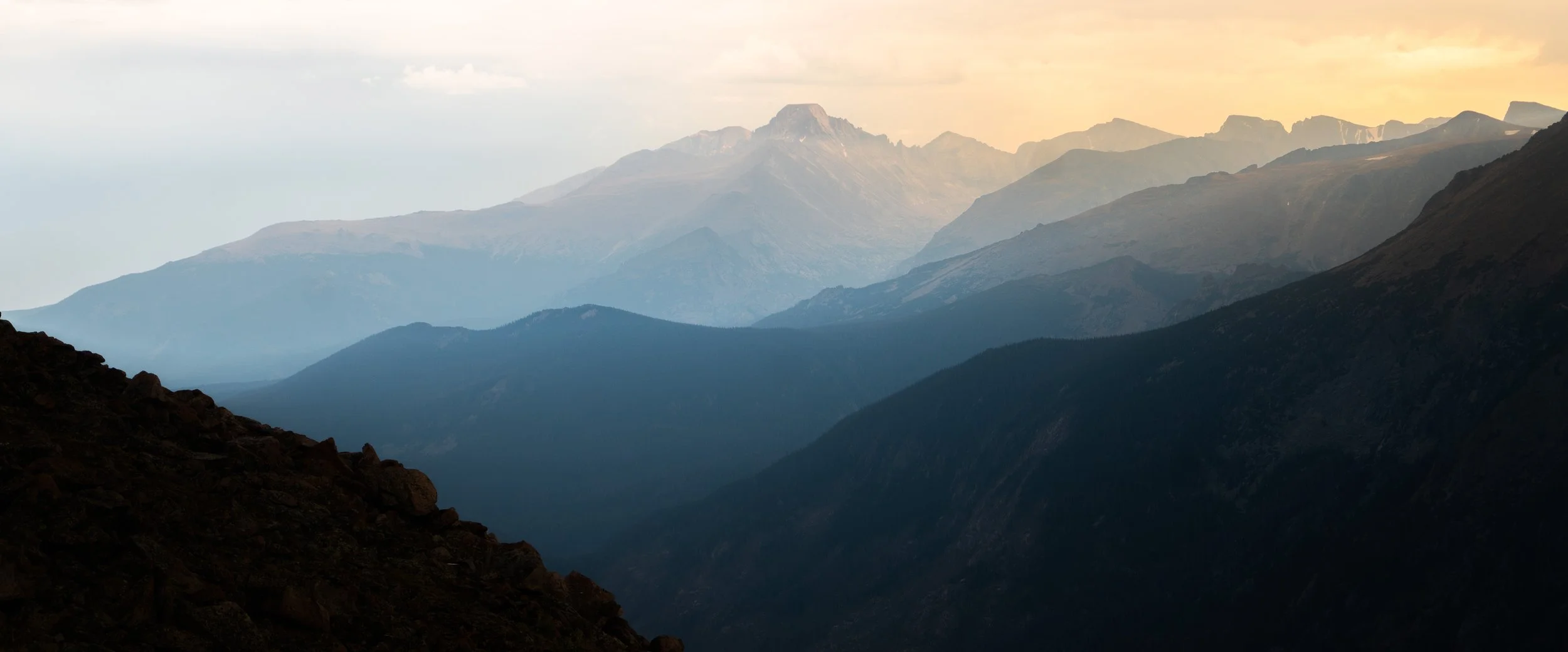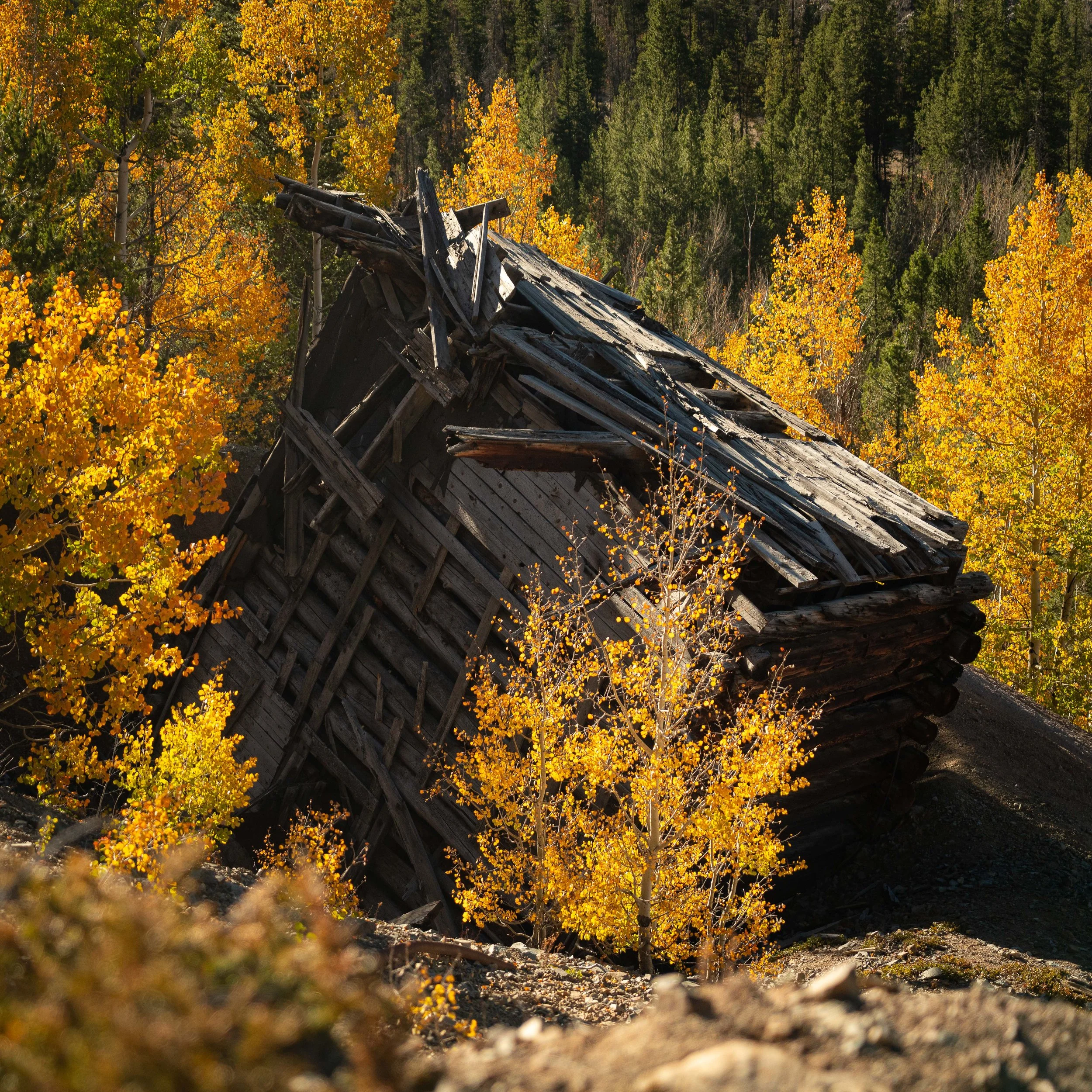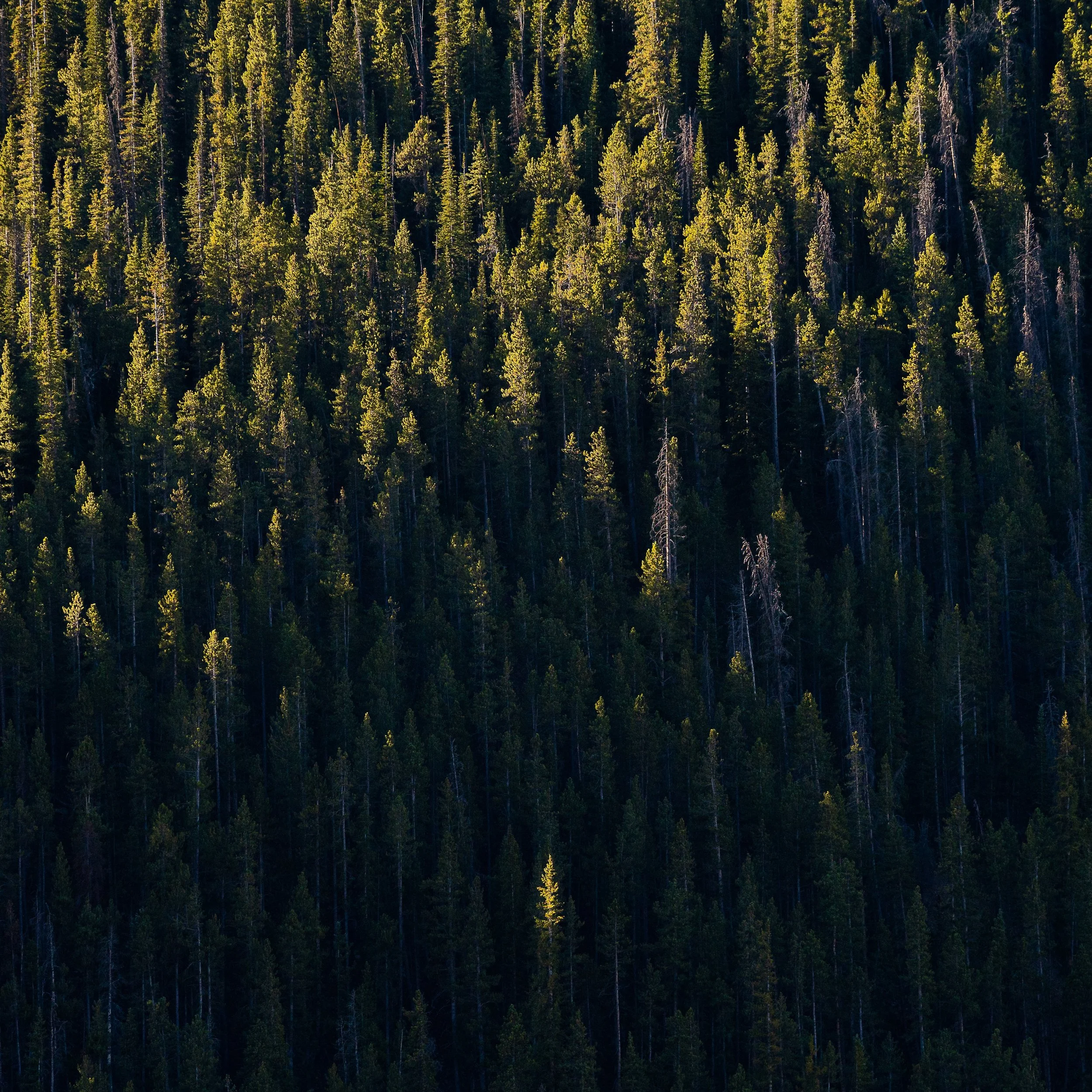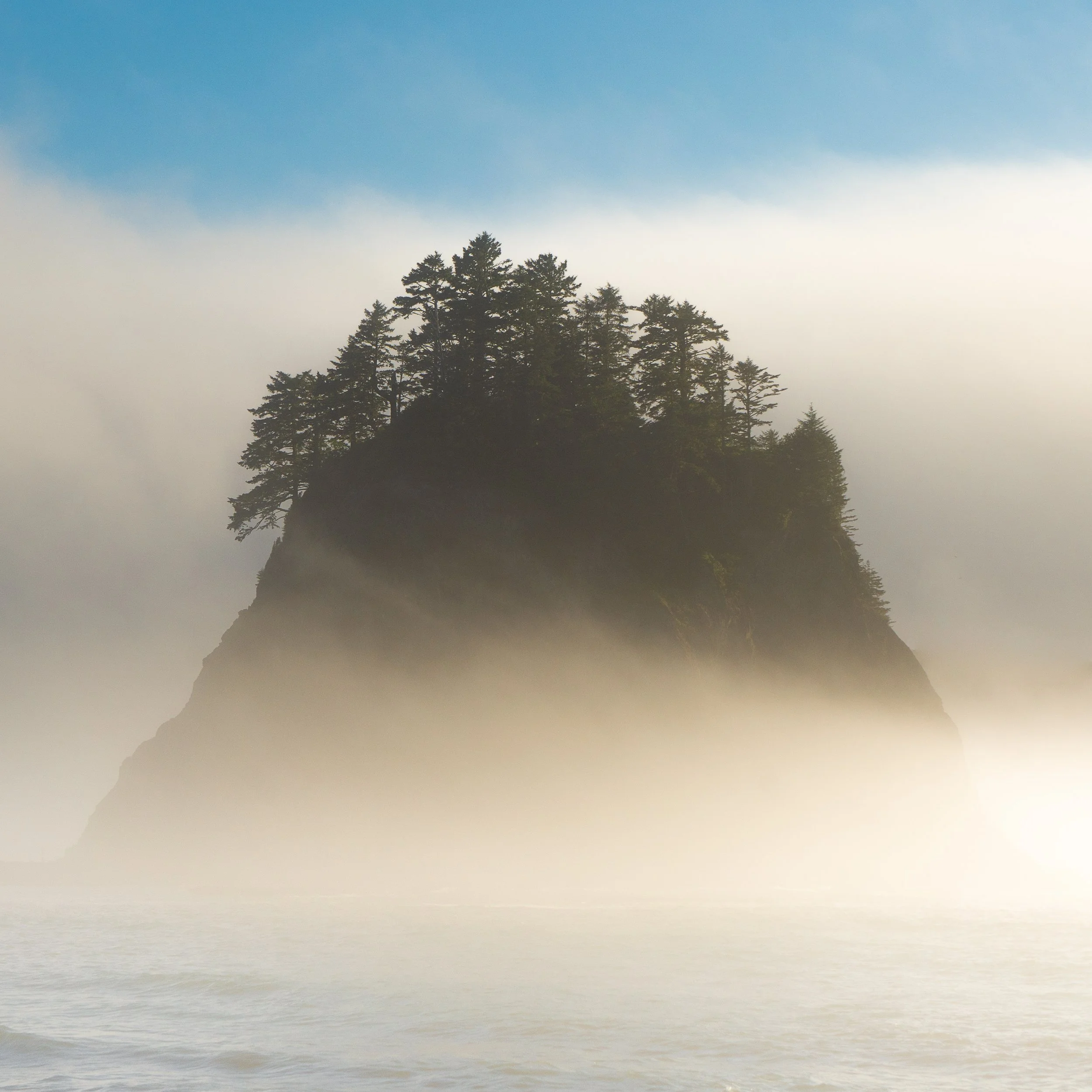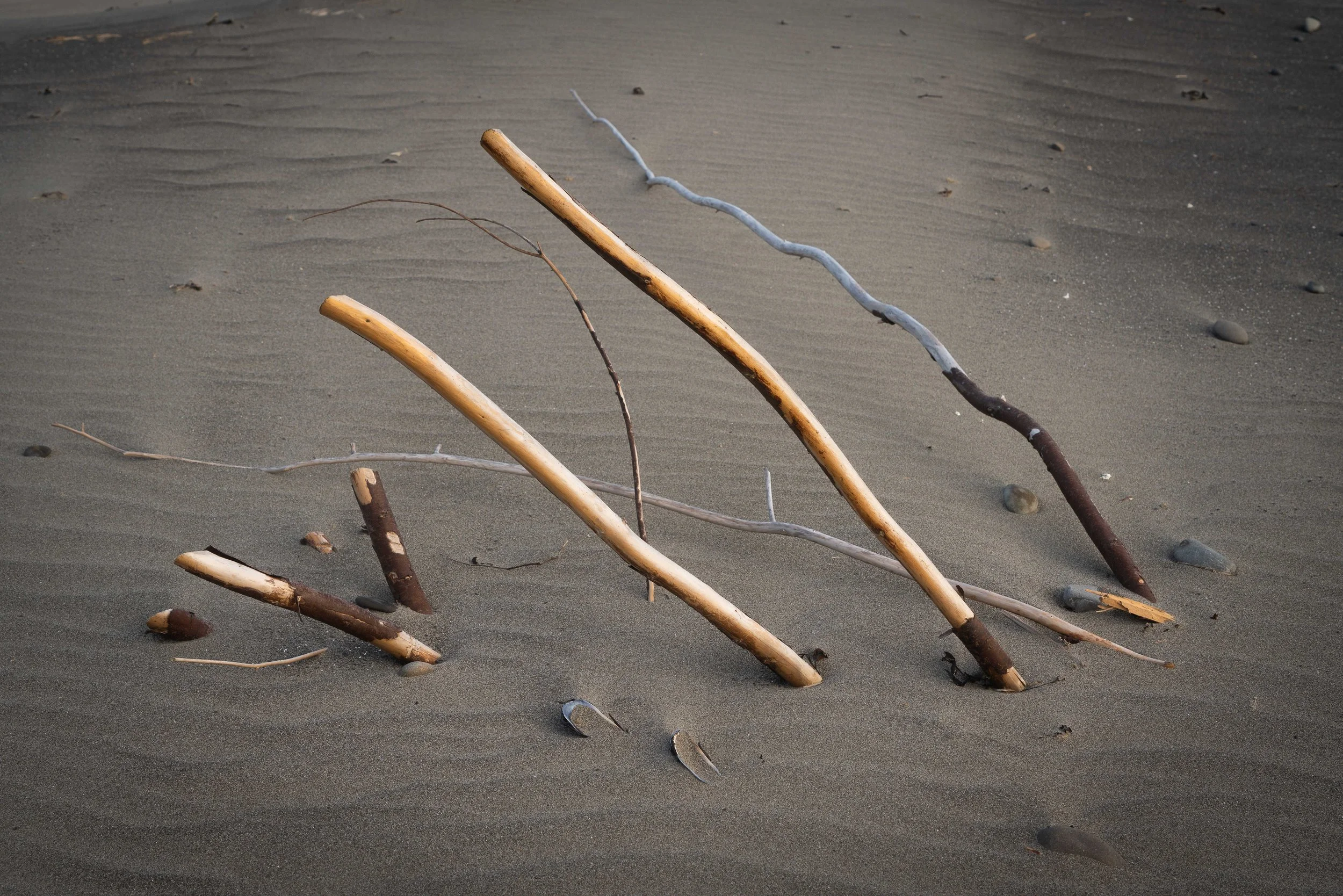How to Tell a Story with Photography
Learn how to tell a story through your photography. I’ll cover story-telling within singular photos, multiple photos, and alternative mediums you can use to enhance your photography.
Prefer to watch this tutorial in video format? 😏
Introduction to Story-Telling
In this tutorial, I'm going to discuss how to tell a story through your photography. A concept that is notoriously difficult because a single frame gives little flexibility to work with.
I'll start by breaking down story-telling techniques for singular photos, and then move into how you can also achieve this with a series of photos. Finally, I’m going to walk you through a few different mediums you can use to support your photography.
Let’s dive in!
Singular Photos
Singular photos are quite possibly the most challenging way to capture a story because you have to convey an entire narrative within a single shot. This can be particularly difficult for landscapes or nature-related shots, which has been the focus of this course.
The obvious solution is to include people in your shots, because the viewer will be able to easily connect with whatever they’re doing. But people aren’t always available, and sometimes they can detract from the vibe of the image.
Therefore, in this section, I'm going to show you five different ways to tell a story within a single photo without always using people.
This photo of a person relaxing on a rock was taken at Bonsai Rock at Lake Tahoe, Nevada. It begs the question… how they got to the rock?
Emotion
The first method to telling a story is through emotion. Try to make your viewer feel a specific emotion in your shot. For pure landscapes images, you can achieve this through visual harmony.
Harmony is the combination of all elements in your shot working together to evoke a certain emotion. Start by picking an emotion and finding a way to translate it into the objects within the landscape. For example, check ou this shot:
This image was taken at Myrtle Falls in Mt. Rainier State Park in Washington state.
The emotion I chose to translate was “peace/tranquility.” This was achieved by capturing the mountain at sunset, using motion blur on the waterfall, and combining it with a separate shot of the moon. Since the sky was blown out, the Photoshopped addition of the moon (which was taken 180° from the mountain) helped add a sense of calmness to the scene. The combination of all three of these things achieved my story of peace.
Another example is this photo taken in a cave in Oregon, where I wanted to evoke a sense of mystery:
This photo was taken at Skylight Cave in Oregon.
In order to convey mystery, I found in my research that at a certain time of day, light trails shone through the holes in the cave, creating an Indiana Jones-like scene. By timing my visit to capture that light, I was able to build a story of mystery in the cave.
“What is hidden in this cave? What makes the light shine in this cave? What happened in this cave?” These are all questions the viewer is forced to ask themselves, which can help build fictional narratives in their heads.
As mentioned before, people can provide a nice shortcut to building a story in your photography. Check out this waterfall, for example:
This photo was taken at Sahalie and Koosah Falls in Oregon. Can’t remember which one this one was, but they’re right next to each other.
The target emotion here is “adventure,” which happens to be the story in many of my shots. In order to get this image, I had to climb some sketchy wet rocks to get in position. Once I was at the top, I positioned myself to make it look like my foot was resting on a rock, to tell the viewer the story that I conquered the waterfall (or the hike leading to it.)
Move Objects
The second way to tell a story in a shot is by moving objects to your liking. Don't be afraid to rearrange rocks, seashells, or other elements to create a narrative. Just because you found something a certain way doesn't mean the viewer needs to know that. I think you’d be surprised how many photographers position objects for composition’s sake.
For example, while walking along the beach in Mexico, I found a fossilized piece of coral washed up on the shore. Alone in the sand, it didn't make a great shot- but when I moved it to a spot among the rocks where I knew the water would wrap around it, it created a neat long-exposure shot:
This photo of coral was taken at Playa Arbolito in Baha California, Mexico.
This gave the image a story: coral nestled in rocks with water washing around it. An image far more engaging than coral simply resting in the sand.
Cause and Effect
The third way to tell a story is through cause and effect, or demonstrating how one event led to a specific outcome. A great example is this shot of a butcher in Mexico:
This photo, representing cause and effect, was taken at Mercado Libertad in Guadalajara, Mexico.
The gruesome image shows a cow's head on a table, which is a popular source of meat in Mexico- it’s used to make cheek, tongue, and lip tacos. (And fun fact, it’s surprisingly good.)
But without context, it simply looks like a cow head on the table, with the focus revealing the butcher’s chopped-off finger. The narrative here is that the karma of killing an animal could have resulted in the butcher's injury. Cause and effect can be a powerful way to tell a story.
Small Details
The fourth way is to focus on the small details in a scene. Instead of capturing everything in a landscape, zoom in on one specific detail. For example, this shot was taken at Johnson's Shut-Ins in Missouri, a famous river with rock formations carved by water over thousands of years:
This photo, taken at Johnson’s Shut-ins in Missouri, demonstrates how the small details of a scene can tell a better story than an overarching image.
I focused on a single rock formation to show the water's effect, highlighting the smooth textures, orange tints, and blue colors. Capturing the entire river with all the rocks would have been overwhelming, diluting the story of how in this photo the water shaped the rocks after thousands of years of erosion.
Planning
The final way to tell a story in a single shot is through planning. Identify an event- such as an eclipse, a weather event, or a natural disaster, and center your shoot around it. For example, this photo was taken at a point in Rocky Mountain National Park during major wildfires in the surrounding forest:
This photo, representing how planning can play a key role in your photos, was taken on Trail Ridge Road in Rocky Mountain National Park.
The smoky haze, setting sun, freezing cold, and orange-blue contrast of the sunset created a once-in-a-lifetime shot that told the story of when fire meets the cold. Timing your shoot around such events can be a great way to tell a unique story.
Photo Series
Now let's talk about a photo series, or multiple shots used in succession to tell a story. In general, this is how I try to approach every adventure.
My favorite series is called the three-shot system, which involves taking three photos: one texture close-up, one small scene, and one big contextual scene. When combined in an album, these three photos tell an overarching story about the location. The close-up shows the details, the smaller scene sets the stage, and the big shot showcases everything in the area.
The key is to edit these photos in a similar style to maintain consistency. If the photos have different edits, colors, or tones, it can be difficult for the viewer to connect them. Using presets or a consistent editing style is crucial.
Here's an example of a photo series of a mine in Breckenridge, Colorado:
This is the first image in this photo series taken at Minnie Mine in Breckenridge, Colorado.
This is the second image in this photo series taken at Minnie Mine in Breckenridge, Colorado.
This is the third image in this photo series taken at Minnie Mine in Breckenridge, Colorado.
The first shot is a big contextual shot of the dilapidated, falling-apart building. The second, more intimate shot captures trees in the background with the sun setting, highlighting one tree as an abstract effect. This demonstrates to the viewer that we’re deep in the woods. Finally, the macro shot at the end shows a fall-colored leaf falling through the air, adding movement and suggesting a slight wind gust. Together, these images tell a story about the scene.
Another example is this sea stack enveloped by fog in Washington's marine layer:
This is the first image in this photo series taken at Rialto Beach in Washington state.
This is the second image in this photo series taken at Rialto Beach in Washington state.
This is the third image in this photo series taken at Rialto Beach in Washington state.
The first shot shows the sea stack emerging from the fog. The second, more intimate shot has me standing in a silhouetted rock structure with the sea stack in the background, connecting the elements. The final macro shot captures a unique driftwood pattern in the sand. These three shots together tell the story of the beach.
Now, it’s important to note that photo series can be whatever you want them to be. The three shot system is simply what works best for me- you can have ten shots, five shots, or fifty shots. They can all be close-ups, or all be big scenes. The only important thing is that there is some sort of connection between them that tells a story.
Alternative Mediums
Now, let's discuss alternative mediums that can be used to enhance the story behind your photos. By this I mean using video, writing, or audio formats to provide context to your adventure.
This can be important because most people don't realize the effort behind-the-scenes that can go into capturing a photo. For example, your viral photo might be the result of a 12-mile hike with all sorts of trials and tribulations- but the viewer might assume you just snapped the photo at an overlook right off the highway. Using alternative mediums can help provide that context to the viewer, helping them connect more deeply with the story behind the image.
This phot was taken on the ridgeline of the Oxford/Belford 14ers in Colorado. Wouldn’t you like to watch the behind-the-scenes footage of this absolutely brutal, 16-mile long hike?
Video
The first medium I want to highlight is video, which can be used to enhance photos through vlogs or documentary-style movies. Vlogs capture action as it happens, without knowing where the story will lead.
My best advice when filming photo vlogs is capture as much footage as possible, and to craft the story during the edit. You may have unnecessary footage, but it’s a crucial step for building the narrative. The advantage of filming a video about your photo adventure is its realism and authenticity, especially in the age of AI and digital manipulation.
Writing
A second medium to give your photography a story is through writing. Writing is my personal format of choice, because of the flexibility that comes with it. For example, you could take a beautiful photo at the end of the day, but an earlier event in the day may have influenced your journey to that photo. Writing lets you tie the entire day into a single narrative, and talk about events that may have happened when you weren’t recording.
On the Adventures section of my website, you can check out hundreds of blog posts I’ve written documenting my photography adventures. It truly is the best supporting medium in my opinion.
Audio
The final medium I want to cover is audio, though podcasts in particular. To tell a photography story, you need to be charismatic, thorough, and skilled at your vocal inflections. I’d say the best way to practice is through rehearsing the story in front of a mirror, and learning how to build suspense.
The main disadvantage to podcasting is that photography is inherently a visual medium, and podcasts are usually consumed in audio format. This can create a strange disconnect where the viewer might have to manually look up the image the photographer is talking about on the podcast.
However, if you can find a way to bypass this by including podcast notes or recording the podcast in video format, audio can be a powerful tool for story-telling.
This photo was taken at Volcan Santiaguito in Guatemala. Besides the fact that there was a volcano erupting in real time, I also broke my foot on this hike. The story behind it could only be told in written or podcast format.
A Final Note on Storytelling
By now, you should realize that storytelling is king. Besides a technically sufficient photo, being able to tell a story is perhaps the most important component in all of photography. If your photo tells a powerful enough story, technicalities such as imperfect focus or composition can easily be overlooked.
Learn to tell a story, and your photography will move audiences in ways you might never expect. Let’s jump into the next tutorial where I’m going to introduce the Environments section of this unit.

